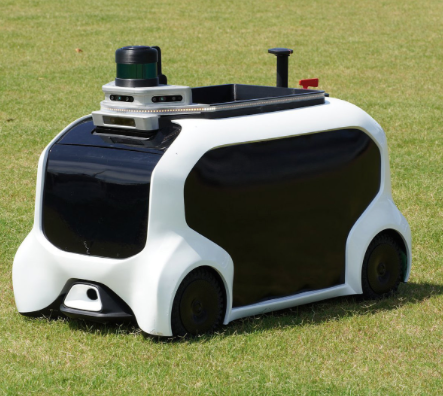Be the first to hear our latest news
Toyota’s 2020 Olympic Robots
Oct 16, 2019
Toyota plans to develop“safer, more efficient mobility, including intelligent transport systems, urban traffic systems and vehicle-to-vehicle communications systems.”
Three definitive values
Toyota identified 3 fundamental values for its participation in the Games in Tokyo next year:
(1) Mobility for All, allowing all people the freedom to move
(2) Sustainability, focusing on the environment and safety
(3) Transportation support for the Games
Different vehicles for different needs
Toyota aims to deliver its mobility solutions with electric power for 90% of the vehicles. They also are offering multiple transportation solutions for those who can’t get on and off standard buses easily.
Robots will play an important role
Toyota’s new mobility innovations include the use of robots throughout the Games:
“Now, as we transform into a mobility company, we are expanding our robotics efforts to provide all people with the freedom to move. 'Mobility for all' is not only the 'physical' movement of a person or thing from one location to another, but also includes 'virtual' mobility of a person. This provides further opportunities to experience new things, meet and interact with others, or to be 'moved' emotionally. At Tokyo 2020, we want to capture the imagination of spectators by providing support robots as we do our part to make the Games a success”.
Toyota has shown five different robot designs to meet specific needs for competitors, officials, and viewers of the games. The look of each robot is as distinctive as its function.
1. The Tokyo 2020 Mascot Robot – Miraitowa and Someity
This model will appeal to children, so hopefully extending the enjoyment of the games to children in Japan.
The mascot robot will both allow expressions of arm movements via a remote-location robot, and share force-feedback from interactions via a camera mounted on the robot's head, it can recognize people nearby, and once recognized, use its eyes to respond with/show a variety of expressions.
2. The T-HR3 (Humanoid Robot) may be more intimidating for a child, but is aimed to help extend the experience of the games to adults.
These robots are capable of reproducing movement from a remotely located mascot robot in near real-time. They can share images and sounds from the remote locations and also translate the physical experience of interaction, including high-fiving the competitors or others in attendance. 
3. The T-TR1 (Remote location communication Robot) is a virtual mobility/tele-presence robot, equipped with a camera atop a large, near-lifesize display.
This will allow people that are physically unable to attend the Games, a chance to virtually attend, with an on-screen presence capable of conversation between the two locations.
4. The HSR (Human Support Robot) and DSR (Delivery Support Robot) look like ‘traditional’ robots without strong humanoid features.
The HSR will direct guests to their seats within a section with specific accessible seating at the Olympic Stadium.
The DSR will deliver beverages or other items ordered through a tablet to spectators across all seating areas. 
5. The FSR (Field Support Robot) as the name implies, works the field.
These robots will clear the field of obstacles for the javelin competition, reducing both the need for human labour in retrieval and the amount of time needed to wait for the items to be cleared.
(Extracts from “Toyota Showcases Sustainable Mobility for All With Solutions Designed for 2020 Olympics and Paralympics”, Interesting Engineering, Sept 7th 2019)
Plunkett Associates thoughts…
We look forward to seeing them, but cannot help wondering how long before they have their own events?!
















